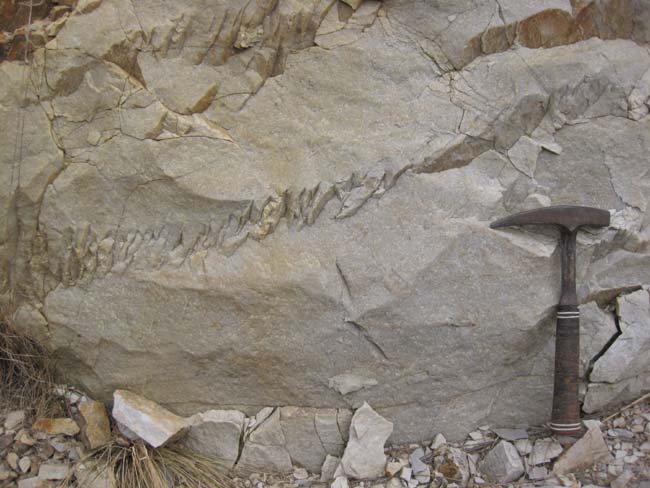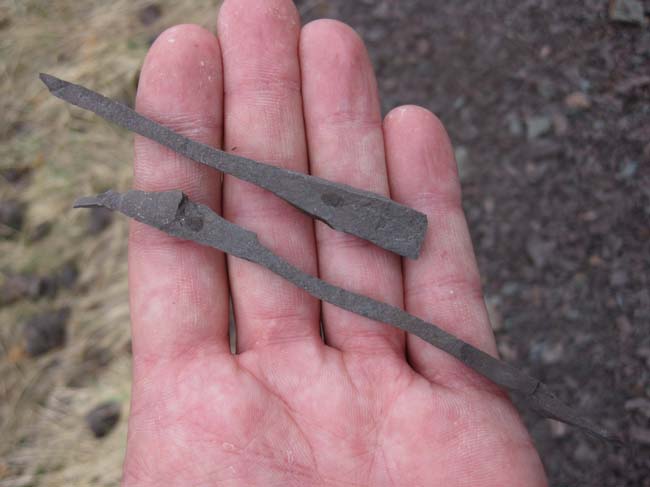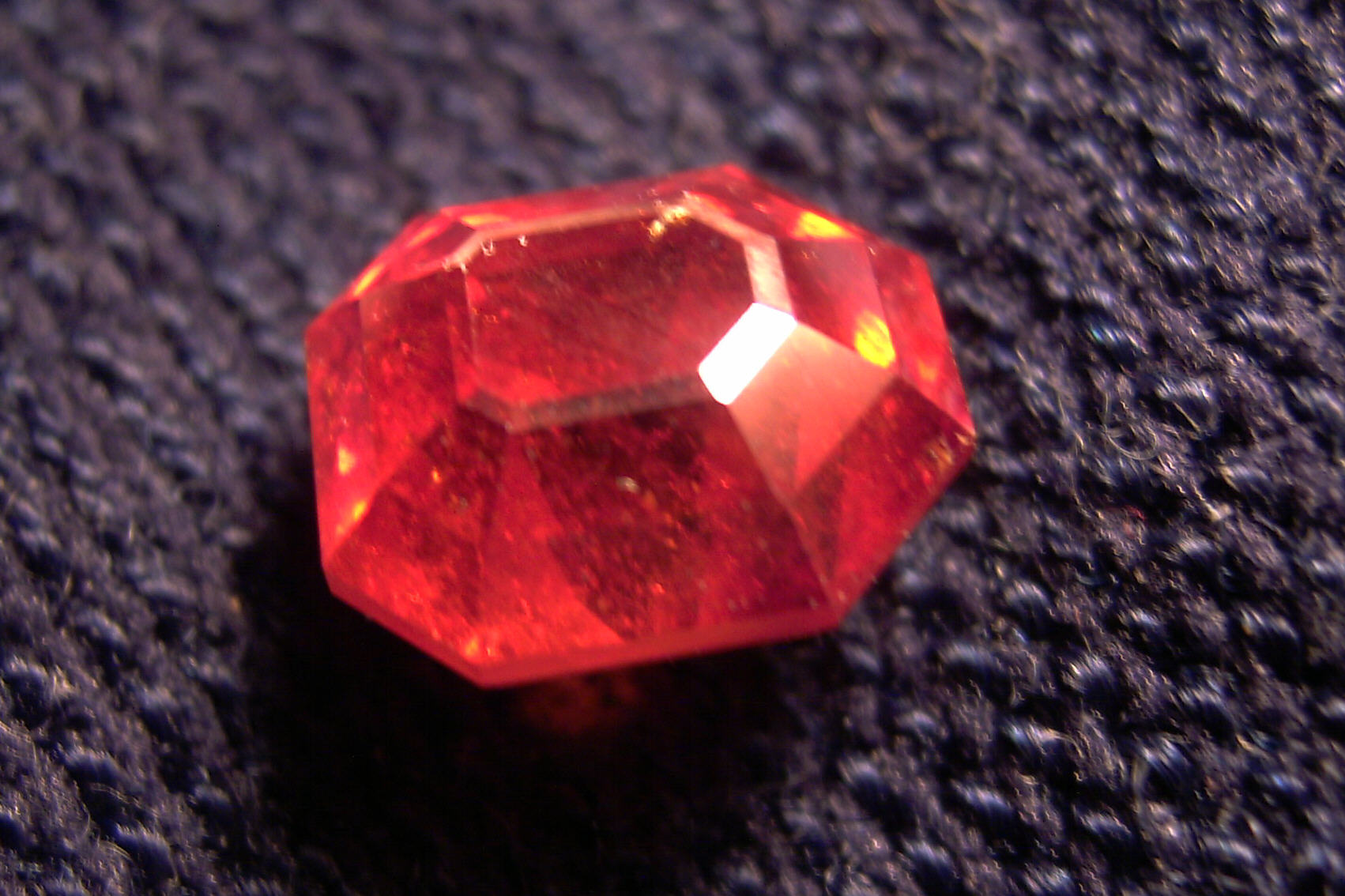Source(google.com.pk)
Cleavage Minerals Biography
Garnet species are found in many colors including red, orange, yellow, green, blue, purple, brown, black, pink and colorless. The rarest of these is the blue garnet, discovered in the late 1990s in Bekily, Madagascar. It is also found in parts of the United States, Russia, Kenya, Tanzania, and Turkey. It changes color from blue-green in the daylight to purple in incandescent light, as a result of the relatively high amounts of vanadium (about 1 wt.% V2O3). Other varieties of color-changing garnets exist. In daylight, their color ranges from shades of green, beige, brown, gray, and blue, but in incandescent light, they appear a reddish or purplish/pink color. Because of their color-changing quality, this kind of garnet is often mistaken for Alexandrite.
A sample showing the deep red color garnet can exhibit.
Garnet species' light transmission properties can range from the gemstone-quality transparent specimens to the opaque varieties used for industrial purposes as abrasives. The mineral's luster is categorized as vitreous (glass-like) or resinous (amber-like).
Garnets are nesosilicates having the general formula X3Y2(Si O4)3. The X site is usually occupied by divalent cations (Ca2+, Mg2+, Fe2+) and the Y site by trivalent cations (Al3+, Fe3+, Cr3+) in an octahedral/tetrahedral framework with [SiO4]4− occupying the tetrahedra.[4] Garnets are most often found in the dodecahedral crystal habit, but are also commonly found in the trapezohedron habit. (Note: the word "trapezohedron" as used here and in most mineral texts refers to the shape called a Deltoidal icositetrahedron in solid geometry.) They crystallize in the cubic system, having three axes that are all of equal length and perpendicular to each other. Garnets do not show cleavage, so when they fracture under stress, sharp irregular pieces are formed.
Because the chemical composition of garnet varies, the atomic bonds in some species are stronger than in others. As a result, this mineral group shows a range of hardness on the Mohs scale of about 6.5 to 7.5. The harder species like almandine are often used for abrasive purposes.
For gem identification purposes, a pick-up response to a strong neodymium magnet separates garnet from all other natural transparent gemstones commonly used in the jewelry trade. Magnetic susceptibility measurements in conjunction with refractive index can be used to distinguish garnet species and varieties, and determine the composition of garnets in terms of percentages of end-member species within an individual gem
Almandine
Almandine in metamorphic rock
Almandine, sometimes incorrectly called almandite, is the modern gem known as carbuncle (though originally almost any red gemstone was known by this name). The term "carbuncle" is derived from the Latin meaning "live coal" or burning charcoal. The name Almandine is a corruption of Alabanda, a region in Asia Minor where these stones were cut in ancient times. Chemically, almandine is an iron-aluminium garnet with the formula Fe3Al2(SiO4)3; the deep red transparent stones are often called precious garnet and are used as gemstones (being the most common of the gem garnets). Almandine occurs in metamorphic rocks like mica schists, associated with minerals such as staurolite, kyanite, andalusite, and others. Almandine has nicknames of Oriental garnet, almandine ruby, and carbuncle.
Pyrope
Pyrope (from the Greek pyrōpós meaning "fire-eyed") is red in color and chemically a magnesium aluminium silicate with the formula Mg3Al2(SiO4)3, though the magnesium can be replaced in part by calcium and ferrous iron. The color of pyrope varies from deep red to black. Pyrope and spessartine gemstones have been recovered from the Sloan diamondiferous kimberlites in Colorado, from the Bishop Conglomerate and in a Tertiary age lamprophyre at Cedar Mountain in Wyoming.[6]
A variety of pyrope from Macon County, North Carolina is a violet-red shade and has been called rhodolite, Greek for "rose". In chemical composition it may be considered as essentially an isomorphous mixture of pyrope and almandine, in the proportion of two parts pyrope to one part almandine. Pyrope has tradenames some of which are misnomers; Cape ruby, Arizona ruby, California ruby, Rocky Mountain ruby, and Bohemian garnet from the Czech Republic. Another intriguing find is the blue color-changing garnets from Madagascar, a pyrope-spessartine mix. The color of these blue garnets is not like sapphire blue in subdued daylight but more reminiscent of the grayish blues and greenish blues sometimes seen in spinel. However, in white LED light, the color is equal to the best cornflower blue sapphire, or D block tanzanite; this is due to the blue garnet's ability to absorb the yellow component of the emitted light.[citation needed]
Pyrope is an indicator mineral for high-pressure rocks. The garnets from mantle-derived rocks, peridotites, and eclogites commonly contain a pyrope variety.
Spessartine
Spessartine (the reddish mineral)
Spessartine or spessartite is manganese aluminium garnet, Mn3Al2(SiO4)3. Its name is derived from Spessart in Bavaria. It occurs most often in granite pegmatite and allied rock types and in certain low grade metamorphic phyllites. Spessartine of an orange-yellow is found in Madagascar. Violet-red spessartines are found in rhyolites in Colorado and Maine










Cleavage Minerals Biography
Garnet species are found in many colors including red, orange, yellow, green, blue, purple, brown, black, pink and colorless. The rarest of these is the blue garnet, discovered in the late 1990s in Bekily, Madagascar. It is also found in parts of the United States, Russia, Kenya, Tanzania, and Turkey. It changes color from blue-green in the daylight to purple in incandescent light, as a result of the relatively high amounts of vanadium (about 1 wt.% V2O3). Other varieties of color-changing garnets exist. In daylight, their color ranges from shades of green, beige, brown, gray, and blue, but in incandescent light, they appear a reddish or purplish/pink color. Because of their color-changing quality, this kind of garnet is often mistaken for Alexandrite.
A sample showing the deep red color garnet can exhibit.
Garnet species' light transmission properties can range from the gemstone-quality transparent specimens to the opaque varieties used for industrial purposes as abrasives. The mineral's luster is categorized as vitreous (glass-like) or resinous (amber-like).
Garnets are nesosilicates having the general formula X3Y2(Si O4)3. The X site is usually occupied by divalent cations (Ca2+, Mg2+, Fe2+) and the Y site by trivalent cations (Al3+, Fe3+, Cr3+) in an octahedral/tetrahedral framework with [SiO4]4− occupying the tetrahedra.[4] Garnets are most often found in the dodecahedral crystal habit, but are also commonly found in the trapezohedron habit. (Note: the word "trapezohedron" as used here and in most mineral texts refers to the shape called a Deltoidal icositetrahedron in solid geometry.) They crystallize in the cubic system, having three axes that are all of equal length and perpendicular to each other. Garnets do not show cleavage, so when they fracture under stress, sharp irregular pieces are formed.
Because the chemical composition of garnet varies, the atomic bonds in some species are stronger than in others. As a result, this mineral group shows a range of hardness on the Mohs scale of about 6.5 to 7.5. The harder species like almandine are often used for abrasive purposes.
For gem identification purposes, a pick-up response to a strong neodymium magnet separates garnet from all other natural transparent gemstones commonly used in the jewelry trade. Magnetic susceptibility measurements in conjunction with refractive index can be used to distinguish garnet species and varieties, and determine the composition of garnets in terms of percentages of end-member species within an individual gem
Almandine
Almandine in metamorphic rock
Almandine, sometimes incorrectly called almandite, is the modern gem known as carbuncle (though originally almost any red gemstone was known by this name). The term "carbuncle" is derived from the Latin meaning "live coal" or burning charcoal. The name Almandine is a corruption of Alabanda, a region in Asia Minor where these stones were cut in ancient times. Chemically, almandine is an iron-aluminium garnet with the formula Fe3Al2(SiO4)3; the deep red transparent stones are often called precious garnet and are used as gemstones (being the most common of the gem garnets). Almandine occurs in metamorphic rocks like mica schists, associated with minerals such as staurolite, kyanite, andalusite, and others. Almandine has nicknames of Oriental garnet, almandine ruby, and carbuncle.
Pyrope
Pyrope (from the Greek pyrōpós meaning "fire-eyed") is red in color and chemically a magnesium aluminium silicate with the formula Mg3Al2(SiO4)3, though the magnesium can be replaced in part by calcium and ferrous iron. The color of pyrope varies from deep red to black. Pyrope and spessartine gemstones have been recovered from the Sloan diamondiferous kimberlites in Colorado, from the Bishop Conglomerate and in a Tertiary age lamprophyre at Cedar Mountain in Wyoming.[6]
A variety of pyrope from Macon County, North Carolina is a violet-red shade and has been called rhodolite, Greek for "rose". In chemical composition it may be considered as essentially an isomorphous mixture of pyrope and almandine, in the proportion of two parts pyrope to one part almandine. Pyrope has tradenames some of which are misnomers; Cape ruby, Arizona ruby, California ruby, Rocky Mountain ruby, and Bohemian garnet from the Czech Republic. Another intriguing find is the blue color-changing garnets from Madagascar, a pyrope-spessartine mix. The color of these blue garnets is not like sapphire blue in subdued daylight but more reminiscent of the grayish blues and greenish blues sometimes seen in spinel. However, in white LED light, the color is equal to the best cornflower blue sapphire, or D block tanzanite; this is due to the blue garnet's ability to absorb the yellow component of the emitted light.[citation needed]
Pyrope is an indicator mineral for high-pressure rocks. The garnets from mantle-derived rocks, peridotites, and eclogites commonly contain a pyrope variety.
Spessartine
Spessartine (the reddish mineral)
Spessartine or spessartite is manganese aluminium garnet, Mn3Al2(SiO4)3. Its name is derived from Spessart in Bavaria. It occurs most often in granite pegmatite and allied rock types and in certain low grade metamorphic phyllites. Spessartine of an orange-yellow is found in Madagascar. Violet-red spessartines are found in rhyolites in Colorado and Maine
Cleavage Minerals Photos Pictures Pics Images

Cleavage Minerals Photos Pictures Pics Images

Cleavage Minerals Photos Pictures Pics Images
Cleavage Minerals Photos Pictures Pics Images

Cleavage Minerals Photos Pictures Pics Images

Cleavage Minerals Photos Pictures Pics Images

Cleavage Minerals Photos Pictures PicsImages

Cleavage Minerals Photos Pictures PicsImages

Cleavage Minerals Photos Pictures Pics Images

Cleavage Minerals Photos Pictures Pics Images

Cleavage Minerals Photos Pictures Pics Images